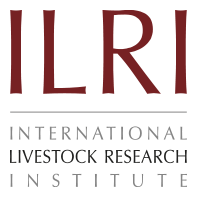Barotse
Origin and distribution: In general, Sanga cattle were introduced into southern Africa when the Khoikhoi (Hottentots) first crossed the Zambezi River about 700AD with their Sanga cattle. Several waves of the Bantu people with various strains of Sanga cattle entered the region and settled. Tribal migration and cattle raids continued until recently; consequently the different breeds of Sanga today are related. The Barotse breed, also known as Lozi, Rowzi, Rozi or Baila, appears to have expanded after the Rinderpest epidemic (Felius, 1995). Their homeland is Barotseland of West Zambia and Southeast Angola. The territory is characterized by the flood plain of the Zambezi, extending into Angola on the west.
Physical characteristics: The Barotse are big sanga type animals with large spreading, lyre-shaped horns. The usual coat colours are brown, dark red, fawn or black, sometimes mixed with white although pure white colour has never occurred. The hump is small, often barely visible in the cow. Wither heights of mature male and female animals are 120-137 and 114-129 cm, respectively (Mason and Maule 1960).
Peculiarity: Typical Sanga conformation with long horns and legs; coarse-boned and large longy appearance from long legs (Felius, 1995). The Barotse is a docile animal and makes a good work animal.
Breed status: The current estimate of the population is 793 000 (Rege 1999). According to DAD-IS (2005), population estimate in Zambia were less than 100 000. The majority of this breed is found in Angola but population estimate could not be made due to protracted war in the region. Declining population due to high mortality caused by Contagious Bovine Pleuropneumonia (CBPP), indiscriminate crossbreeding and drought has been reported. No breed conservation program exists.
Utility: The Barotse are triple purpose cattle (beef, dairy and work), beef being the most important product. Under better management bulls weigh up to 700 kg and cows 485 kg, but respective weights of 580 and 400 kg were recorded when management was only average. Age at first calving is about 44 months; lactation milk yield is 1077 litres in an average lactation length of 302 days; conception rate is 67.1% and the calving interval is 620 days (Thorpe et al. 1980 a,b,&c; Thorpe et al. 1981). Comparative growth performances and calving interval in Barotse, Boran and Angoni is presented in Table 1.
Table 1. Relative growth and reproductive performance of Barotse breed at the Central Research Station of Mazabuka, Zambia (1966-1970)
|
Breed |
Birth weight, |
Weaning weight, |
Calving percentage, |
Age at maximum |
|
Angoni |
22.9 |
147.3 |
82.5 |
7 years |
|
Barotse |
25.7 |
167.0 |
78.1 |
9 years |
|
Boran |
25.2 |
169.5 |
75.4 |
7 years |
Source: Thorpe et al. (1980)
References
DAD-IS, 2005: http://dad.fao.org/en/home.html
Felius, M. 1995. Cattle breeds: an encyclopedia. Doetinchem (The Netherlands): Misset. 799 pp.
Hanotte O. Okomo M. Verjee Y. Rege J.E.O. and Teale A. 1997. A polymorphic Y chromosome microsatellite locus in cattle. Animal Genetics (UK). 28(4):318-319.
Mason I.L. and Maule J.P. 1960. The indigenous livestock of eastern and Southern Africa. Common wealth Agricultural Bureaux. Farnham Royal, Bucks, England. pp. 29.
Rege J.E.O. 1999. The state of African cattle genetic resources. I. Classification framework and identification of threatened and extinct breeds. FAO/UNEP Animal Genetic Resources Information Bulletin 25:1-25.
Thorpe W. and Cruickshank D.K.R. Thompson R. 1980. Genetic and environmental influences on beef cattle production in Zambia. 1. Factors affecting weaner production from Angoni, Barotse and Boran dams. Animal Production (UK). 30(2):217-233.
Thorpe W. and Cruickshank D.K.R. Thompson R. 1980. Genetic and environmental influences on beef cattle production in Zambia. 2. Live weights for age of purebred and reciprocally crossbred progeny. Animal Production (UK). 30(2):235-243.
Thorpe W. and Cruickshank D.K.R. Thompson R. 1980. Genetic and environmental influences on beef cattle production in Zambia. 3. Carcass characteristics of purebred and reciprocally crossbred castrated males. Animal Production (UK). 30(2):245-252.
Thorpe W. and Cruickshank D.K.R. Thompson R. 1981. Genetic and environmental influences on beef cattle production in Zambia. 4. Weaner production from purebred and reciprocally crossbred dams. Animal Production (UK). 33(2):165-177.
Related Literature
Maule J.P. 1990. The cattle of the tropics. Centre for Tropical Veterinary Medicine, University of Edinburgh. Redwood Press Limited, Melksham, Wilts. pp. 67-68.
Mwenya W.N.M. and Shandomo M.N. 1989. Performance of some beef breeds in Zambia. TSAP Conference Series (Tanzania). Tanzania Society of Animal Production, Morogoro. 13: 265-273.
Related websites







